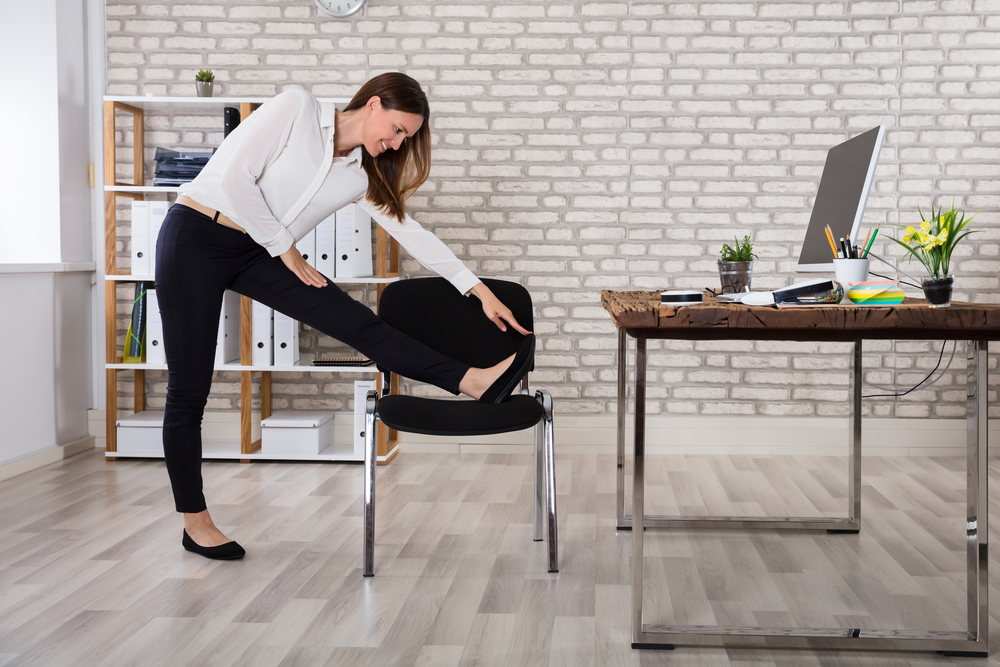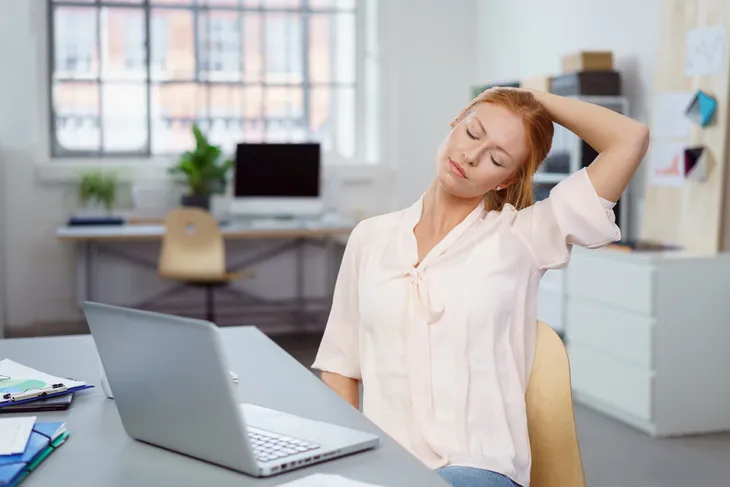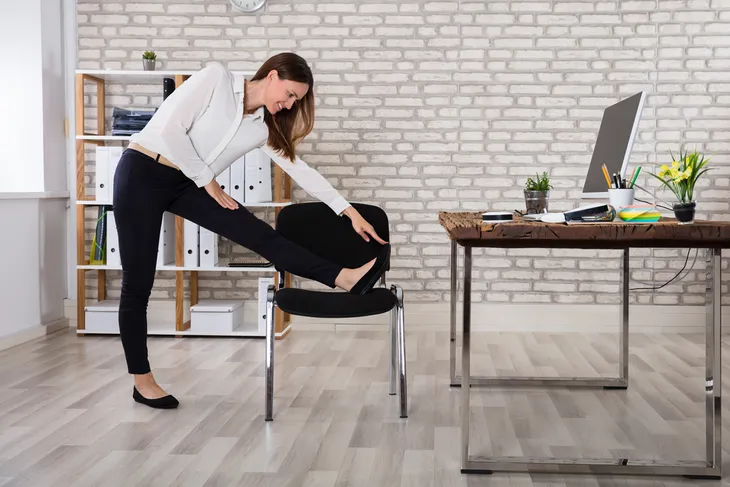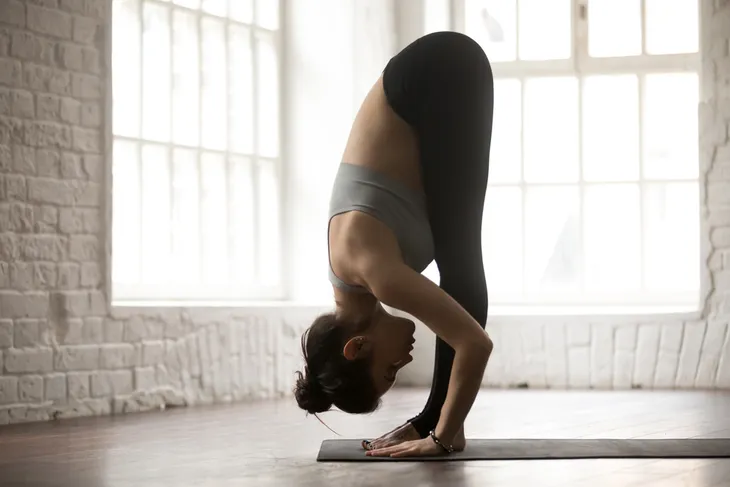Sitting all day and staring at a computer screen can lead to tight muscles from head to toe. It isn’t always possible to break out into a full-on yoga session during the day, but you can perform a variety of effective stretches from the comfort of your office chair.
For best results, perform each stretch at least once a day or twice if you have time. Hold the stretches for 20- to 30-seconds, don’t bounce the stretch, and only work within a range of motion where you feel the stretch, but not pain…
Upper Traps Stretch
Reaching forward for your keyboard and mouse, letting tightness creep up into your shoulders, or letting your head fall forwards to read your computer screen can cause tightness in your upper traps. Your upper traps are the muscles that elevate your shoulders; when tight, then can refer pain into the neck and contain some stubborn trigger points.
To stretch them out, sit up straight in your chair with your feet flat on the floor. Take your right hand and grip onto the bottom of your chair. Tilt your head to your left shoulder and gently use your left hand to pull your ears closer to your shoulder. You should feel the tension releasing in your right trap. Switch hands and do the left side. This should not be a stretched that is performed aggressively, so be mindful of the amount of force you use when gripping the chair or pulling on your head.
Hip Flexors Stretch
Tight hip flexors are a common culprit in low back disorders, hip pain, and knee pain. Sitting all day encourages the muscles to shorten, which is why maintaining flexibility and getting up out of sitting position frequently is important. To stretch the hip flexors, start by standing in front of your chair, facing away from it. Place one foot on the back of the chair and bend the knee of the supporting leg to allow you to sink into the stretch.
You can intensify or modify the stretch by squeezing the glutes on the stretched side. Another way to modify the stretch is to add the same arm as the side that is stretched; reach over your head and bending slightly towards your opposite hip. Follow this stretch by simply squeezing the glutes while standing and it will further encourage the hip flexors to relax.
Hamstrings Stretch
You don’t need to perform a downward dog to the get the benefits of a hamstring stretch. Office chairs are great for stretching the hamstrings as they allow you to free rotate your foot inwards or outwards to change the focus of the stretch from more medial to more lateral. Stand up and face your chair and then put one foot on the chair. Make sure to keep your toes flexed (pointing to the ceiling).
Slowly lean forward by tilting at your hips. One of the most common errors with this stretch is rounding the back, which then reduces the stretch of the hamstrings. Allow the chair to roll slightly towards and away from your midline, as well as rotating your foot inwards or outwards, to change the target area for the stretch. Hamstrings are easy to pull if you overdo it, so remember to relax into the stretch.
Glutes Stretch
The glutes actually refer to three distinct muscles, the gluteus minimus, gluteus maximus, and gluteus medius. As a group they are responsible for extending and externally rotating the hip. They are also prone to becoming weak and tight from extended sitting and disuse. For this stretch you don’t even need to get up at all! Start by sitting in your chair with both feet flat on the floor. Lift one foot up and rest it just above the knee on your opposite thigh. Making sure not to round your back, hinge at the hips and lean forward until you feel a stretch.
To make it more difficult, twist your torso slightly towards your ankle of the stretched side. Follow this stretch by adding in some standing glute squeezes to help maintain their firing and prevent muscle wasting. Adding a couple stationary lunges will also help keep the hip flexors relaxed while reminding the glutes to fire.
Back Stretch
Of all the stretches you might do, stretching out the muscles in your back tends to be one that feels great. Start by standing approximately a foot from your chair. Hinging forward at the hips, grip the armrests and rock your weight into your heels. Swivel your chair slightly to the right and left to stretch out each side. This stretch will be felt more through your mid back and the lats as you swivel from side to side.
While you’re there, drop down onto your knees, keeping your hands on the arm rests. Round your upper back and rock your weight onto your heels until you feel a stretch in your low back. In this modified version of child’s pose, breathe deeply in your belly (not your chest) to help the muscles relax. Leave this pose slowly, not abruptly, to prevent tweaking a lengthened muscle.








